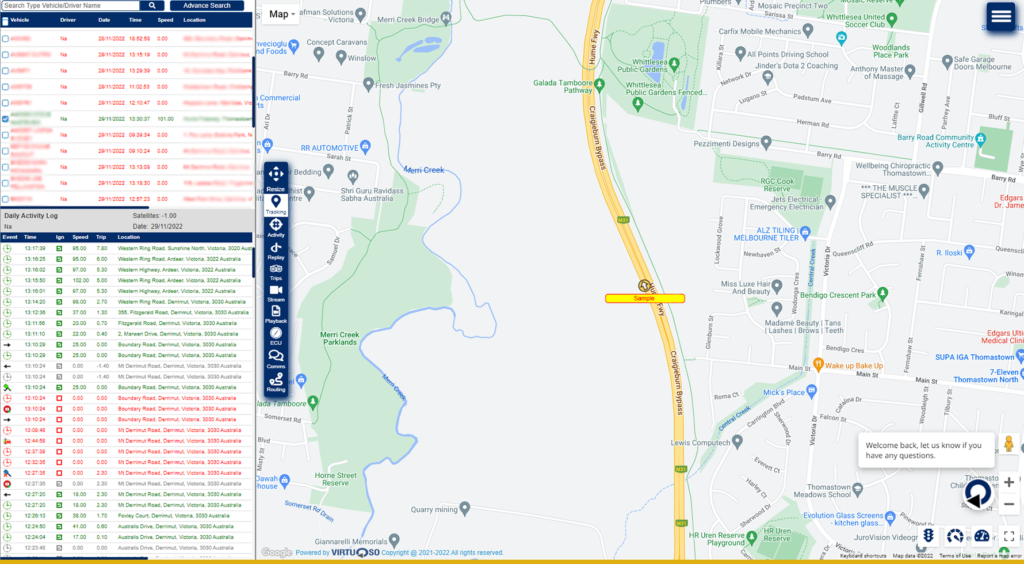This is a simple guide to how GPS vehicle tracking works (in layman terms). We hope you find it useful.
Let’s begin with the basic process of tracking. To track anything requires at least two reference points, usually better if the reference points can be seen from the ground.
Hundreds of years ago, sailors used the stars in the sky as “reference points” for navigation. Today we have our own sky reference points – satellites. A specific satellite system for tracking was developed by the US military to monitor troops and military activities. Later on it was adapted for civilian use. This system is called GPS – which stands for “Global Positioning System“.

GPS tracking devices technology system satellite
Most people have heard of GPS and if not, they would certainly be using GPS technology in their smart phones. Currently, the GPS system includes over 30 satellites that are orbiting the Earth that send signals to the ground. The position on Earth can be determined with any device containing a GPS receiver – including navigation devices, smart phones (Android, Apple, etc) and GPS vehicle tracking devices.
These devices run software (apps) or firmware to provide navigation, directional information, tracking, etc. To get the ground location, the GPS receiver must have access to at least three satellite signals (see diagram above). The same requirement is also true for vehicle tracking using GPS technology.
Now Here’s How GPS Vehicle Tracking Works
Say we have a vehicle with a suitable GPS vehicle tracking device installed – such as one obtained from Fleetminder.

Here is what a vehicle tracking device looks like… essentially a plastic “box” containing electronics (GPS receiver, mobile phone system transmitter, etc).
Fleetminder Lite4G GPS vehicle tracker device for cars vans and trucks
The vehicle tracking device calculates the current GPS location from receiving the GPS satellite signals. The tracking device (example above Lite4G) then transmits the current location (of itself) usually to mobile phone network (towers) via the 3G / 4G frequencies. The rate of location messages (logs) can be programmed by the tracking device supplier (e.g. Fleetminder). Typically the current location log is transmitted every three (3) minutes when the vehicle is moving and once every half our when the vehicle is parked (stationary).
![]()
How GPS vehicle tracking works diagram mobile technology
(in the diagram above, the GPS vehicle tracker is installed in the van. Trackers can be fitted to any vehicle type – cars, vans, 4WDs, caravans, trucks, etc)
The location of the vehicle (with the vehicle tracker installed) is received by the mobile phone tower which then sends the information to the internet (to a specific server). Once on the internet, the location of the vehicle is available with secure access.
With tracking solutions provider Fleetminder, the tracking device hardware and the receiving system – the Fleetminder server, allows for users to see the location of their vehicle on their computer, tablet device or on their mobile phone using a mapping service like Google Maps.

GPS vehicle tracking location on map
(A Google map showing the current location of the vehicle)
The location of the vehicle can be then be used for vehicle theft recovery purposes, or for fleet management, or for future reporting on the vehicle’s use.
Besides location, other useful data is transmitted as well which aids in producing other important reporting functions. This transmitted data can include:
- The current GPS location (latitude and longitude)
- The current speed in km/h or mph
- Key on / key off – when the ignition key was used to start the vehicle (this allows the trip reporting functions to work)
- Engine data (RPM, oil temperature, fuel level) – only with some GPS tracking devices
Navigation and tracking has certainly come along way from navigating by the stars only a hundred years ago. We hope this article has helped you understand a bit more about how GPS vehicle tracking works. Contact us for more.
Related Posts
Vehicle theft is a significant issue in Australia, with thousands of cars, motorcycles, and commercial vehicles stolen each year. Fortunately, advancements in technology have provided us with a powerful tool to combat this problem – the GPS tracker for anti-theft. A Deep Dive into Vehicle Theft Statistics in Australia The National Motor Vehicle Theft Reduction […]
Car trackers have become an indispensable tool for vehicle owners, offering a multitude of benefits that enhance safety, security, and efficiency. Here’s an in-depth look at how a car tracker can be a game-changer for personal vehicle management. Keeping Track of Young Drivers Speeding and Harsh Driving Alerts: A car tracker can send real-time alerts […]
In today’s competitive corporate environment where businesses compete to enhance their customer base, customer satisfaction is seen as a key differentiator which decides the company’s success. Businesses who succeed in this cut-throat corporate competition are the ones that make customer satisfaction a key element of their business strategy. The demand is ever increasing and should […]
If you run a business that relies on a fleet of vehicles, such as delivery, transportation, or service companies, you know how challenging it can be to manage your fleet operations efficiently and effectively. You need to ensure that your vehicles are well-maintained, your drivers are safe and productive, your customers are satisfied, and your […]
